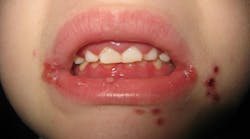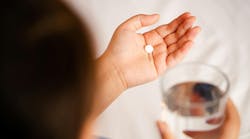Nationwide Study: Majority of Parents Schedule Child's First Dental Visit Two Years Too Late
A survey of U.S. expectant mothers, mothers and primary caregivers released today reveals that nearly 70 percent of children begin receiving dental care two years later than the age recommended by pediatric dental experts.
On average, children first visit a dentist at age three. Dental experts recommend that initial visits occur between the ages of six months and one year, or when the first tooth appears.
"Early visits are crucial in assessing diet and feeding patterns that may contribute to tooth decay, determining if such preventive measures as fluoride treatments are required and teaching parents to better understand and care for their child's teeth and gums," said John S. Rutkauskas, D.D.S., M.B.A., executive director of the American Academy of Pediatric Dentistry (AAPD) Foundation.
Gallup & Robinson conducted the "Oral-B/AAPD Foundation Checkup on Children's Oral Care" study in conjunction with the AAPD Foundation's "Good Health Starts Here" campaign. The two organizations conducted a similar study in 1996.
A comparison with the findings of the earlier study reveals that today's parents are more informed and involved in their children's oral care routine. For example, in 1996, only one-third of parents were aware that their child's oral care routine should begin early and that they should regularly clean their child's gums before the child even has teeth. By contrast, in 2002, over half of parents clean their child's gums.
Some improvements have occurred, but differences still exist between parental behavior and attitudes towards their children's oral care and AAPD recommendations:
----------------------------------------------------------------------
Children's AAPD Recommendations Study Findings
Oral Care
Issues
----------------------------------------------------------------------
Parental Although parents can begin Of those children who brush
Supervision teaching their children to their teeth without
of Child brush at age three, they supervision, more than half
Brushing should continue to started before the age of
supervise brushing until six.
age 11.
----------------------------------------------------------------------
Physical Parents should ensure that Eighty-seven percent of
Dexterity their children are using a parents agree that physical
toothbrush specifically dexterity affects a child's
designed for a child's ability to brush, but only
mouth and grip. 67 percent of children are
using a manual toothbrush
designed for children.
----------------------------------------------------------------------
Proper No more than a pea-sized Parents have shown dramatic
Amount of amount of toothpaste improvement in understanding
Toothpaste should be used. the proper amount of
toothpaste a child should
use to brush. Only 44
percent of parents use more
than the recommended pea-
sized amount, compared with
72 percent in 1996.
----------------------------------------------------------------------
Regularly Children should have Seventy-seven percent of
Scheduled regularly scheduled dental children who visit a dentist
Dental visits (on average, every do so two times per year.
Visits six months), beginning
when the first tooth
appears, but not later
than 12 months of age.
----------------------------------------------------------------------
"This study is important to the AAPD in helping us discover ways in which to educate parents and children about proper oral care," explained Dr. Rutkauskas. "The results will allow us to examine the current oral care routines of children and develop materials that will fit parents' informational needs."
"Helping children and adults have healthy teeth for life is Oral-B's mission," said Bruce Cleverly, president of Gillette Oral Care, explaining Oral-B's sponsorship of the study. "We believe that good oral health begins with informed parents. By understanding parental attitudes, Oral-B can contribute both to the success of pediatric dental professionals in treating children and to the development of oral care products that meet a child's needs."
A total of 1,000 households with expectant mothers and mothers of children, newborn through 12 years old, were surveyed by telephone in January 2002.

